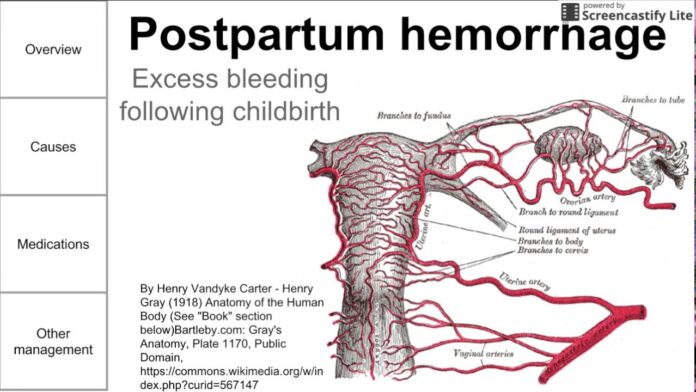Postpartum hemorrhage is a rare but serious condition that can occur after labor and delivery. Being well-informed of possible complications and a c-section drape will help while planning any labor and delivery. Here is what you should know about postpartum hemorrhage :
What Is Postpartum Hemorrhage?
Postpartum hemorrhage is a blood loss of 1,000 mL or more after birth. It can also be the combination of blood loss and signs or symptoms of losing too many fluids within the first 24 hours of the birth process.
According to the Journal of Clinical Gynecology & Obstetrics, postpartum hemorrhage is the leading cause of maternal mortality worldwide. This type of hemorrhage can be prevented by early detection and close observation during and after childbirth.
How Does Postpartum Hemorrhage Occur?
While some people are at higher risk for the conditions that lead to postpartum hemorrhage, it can happen to anyone that gives birth. There are four common reasons that postpartum hemorrhage occurs:
1) Tone
The tone or strength of the uterus can be weakened after childbirth. This weakened uterus is known as uterine atony
2) Trauma
Injuries such as hematomas, inversions, lacerations, or ruptured blood vessels can cause bleeding.
3) Tissue
Heavy bleeding can be caused when tissue is left behind after childbirth or by an invasive placenta (when the placenta attaches too strongly to the wall of the uterus).
4) Thrombin
Also known as coagulopathy, this hinders the blood’s ability to form clots.
Postpartum hemorrhage typically happens near the end of labor. If a doctor or midwife properly helps manage labor, the risk of bleeding is significantly reduced.
What Are the Types of Blood Loss To Look Out For?
There can be two types of blood loss that may cause postpartum hemorrhage, abdominal or vaginal. The signs of postpartum hemorrhage will differ based on whether the delivery method was vaginal or cesarean. Here is what you should know about each delivery method and the risk of postpartum hemorrhage:
Cesarean Section
During a cesarean section, the baby is removed through the abdominal area. Doctors and technicians should be closely monitoring blood loss in this area. While a patient undergoes a cesarean, the ability to check for vaginal bleeding can be limited.
Read Also: How to Use a Male Urine Pot and Karman Cannula?
Vaginal Birth
Other patients may deliver their children vaginally. Through all stages of delivery, the medical provider should monitor for signs of hemorrhaging. It is imperative to check for signs of postpartum hemorrhaging after the delivery of the placenta.
How Can This Be Improved?
The chances of postpartum hemorrhage can be reduced when the proper precautions are taken. Some of the precautions can boil down to the drape used during a c-section or vaginal birth. Unfortunately, the most commonly used drapes may not provide the best visuals to check the vagina or abdomen for signs of hemorrhaging.
The current drape that is used during birth can be difficult for nurses to use. This type of drape may expose physicians to bodily fluids, risk sterile areas, limit light, limit access, and more. To improve the assessment of postpartum hemorrhage, medical providers should use drapes that don’t block the view of the needed areas.
C-Section Drapes and Postpartum Hemorrhage
Those who perform deliveries can acquire a c-section drape that allows easier access to a potential hemorrhage. These drapes are made specifically to give physicians a better view of a hemorrhage, and these sheets are transparent with an opaque sheet on top. This type of c-section drape can allow doctors to see whether their hemorrhage treatment is working.
Postpartum hemorrhage can be more preventable with knowledge and the use of new hemorrhage drapes. Search for a new c-section drape to learn more about how they can improve the way you practice labor and delivery.





